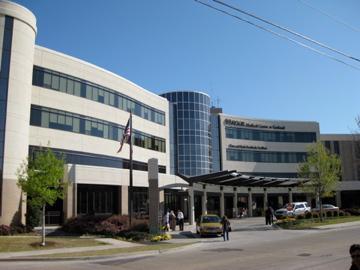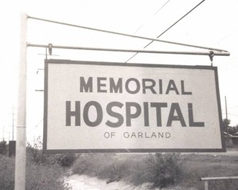In mid-2017, Baylor Scott & White Hospital in Garland announced that Garland’s hospital was for sale. The statement said in part:
“Our priority remains serving the health care needs of our community and identifying a new owner that will further our legacy of providing high-quality care to Garland and valuing our employees and medical staff.”
Citizens were assured that the hospital would not close until a buyer was found.
Finding a new owner to provide “high-quality care to Garland” must have been more difficult than expected or it must not have been very high on the priority list, because as of Feb.28 at 11:59 p.m., Garland will become a city of more than 240,000 residents with no hospital.
This news has not set well with residents. Since the 1960s, Garland citizens have enjoyed the convenience of having a hospital close to the center of the city, but for the first time in more than 50 years, people who live in Garland, the 12th largest Texas city, will be forced to travel out of the city for full-service health care.
The facility opened as Memorial Hospital, in honor of World War II veterans. It provided full-service medical care to Garland’s residents and those of surrounding communities. It also provided numerous jobs for the community. The hospital was purchased in 1991 by the Baylor Health Care System which later became Baylor Scott &
White.
Significant changes in the health care industry have occurred in the last few years as insurance costs have skyrocketed while insurance coverage has decreased. This has resulted in significant amounts in unpaid bills.
Add Garand’s large number of underinsured and uninsured residents, and it’s understandable that the hospital would lose money.
And in reality, everything comes down to money.
At the Feb. 20 Garland City Council Meeting, Council Member Robert John Smith asked for the amount of the hospital’s losses, which Gary Brock, representative from the hospital, placed at “north of $30 million” per year.
“It’s just a business thing,” Brock said. “Health care has to have sound business underpinnings. Ours just eroded to the point that we couldn’t make it financially in the model we were in. I would hope that everyone in the city understands that we’re not abandoning Garland, we’re just changing the way in which we are going to be able to service the citizens here.”
Abandoned does, however, describe how many Garland residents feel.
Smith read a paragraph from a Baylor Scott & White press release which came out soon after the announcement of the Garland facility’s closure. It referred to 2017 as a “banner year in which profit grew 149 percent.” It also announced that in the first half of fiscal year 2018, their Dallas-based systems drew a profit of $595 million, a 53 percent jump from the first half of fiscal year 2017.
“You [Baylor] are a private entity, you are entitled to make a profit,” Smith said. “But you are looking at 1.2 billion in profit this year.”
“Is 2 percent of the bottom line worth it for the PR nightmare that this has become for the hospital?” Smith asked Brock.
The hospital is a nonprofit tax exempt 501(c)(3). Its parent is Baylor Scott & W hite Health Holdings. They are fiduciaries of the 48 hospitals in the system along with a lot of other outpatient and ambulatory facilities. As a 501(c)(3), Baylor Scott & White is legally obligated to donate 3 percent of profits in free health care.
hite Health Holdings. They are fiduciaries of the 48 hospitals in the system along with a lot of other outpatient and ambulatory facilities. As a 501(c)(3), Baylor Scott & White is legally obligated to donate 3 percent of profits in free health care.
In the end, the facility did not, or could not, depending on individual viewpoints, stand behind its May 2017 assurance that the organization was committed to finding a buyer before it closed. And Garland will have, at 11: 59 p.m. Feb. 28, a huge almost vacant facility where a hospital once served residents.
It was a financial problem for Baylor Scott & White and it will now be both a health care and financial problem for Garland and its residents. It’s doubtful that many families will move to a city with no hospital, especially to those neighborhoods already in need of revitalization, as they are farther away from hospital choices. Businesses are less likely to relocate or open in a town without a hospital. Additionally, businesses and residents might relocate because of the situation.
What happens when the under-insured and uninsured Garland residents begin going to Baylor facilities in neighboring towns? Will those hospitals eventually need to close?
The most important impact will be on safety. According to Louis Moore, Garland mayoral candidate, the closing of Baylor Scott & White Garland has the potential to add 10-15 minutes to ambulance rides from central Garland to hospitals in nearby cities. Additionally, Garland Fire Department Chief Mark Lee asked council at the Feb. 20 meeting for an increase of more than $1 million in the Capital Improvement Program budget because the closure of the hospital created a need for two new ambulances. Extra miles and time to transport Garland residents to other hospitals will not create only the need new ambulances, but increased maintenance as well.
The Baylor Scott & White mission is:
“Baylor Scott & White Health exists to serve all people by providing personalized health and wellness through exemplary care, education and research as a Christian ministry of healing.”
They will no longer be fulfilling that mission to the majority of Garland residents. Fortunately, Baylor will continue to work with Garland’s Hope Clinic for uninsured and underinsured residents.
Council Member B.J. Williams expressed frustration about the closing. He said that for a city as large as Garland to be left without a hospital is unacceptable. He added that during discussions, on advice of council, the hospital trustees did not involve city officials. He described that as deplorable.
“This is about business but this is about…people…This is about quality of life…This is about health care…It’s not just about numbers. It’s about human lives,” Williams said. “The gag order, or whatever was issued not to include or not to have discussions with the city…I find that an unacceptable part of a business model.”
Additionally, Williams does not feel that city officials should learn what’s going on in a major facility like the hospital from the Dallas Morning News. He also feels that Garland is being abandoned by Baylor Scott & White.


